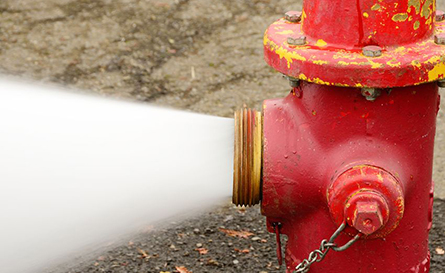WATER MAIN FLUSHING

An essential part of our system’s maintenance program is to flush hydrants every spring and fall in an effort to clear our water mains of sediment and mineral build-up. This practice improves water quality and helps to extend the life of our water mains.
Water main flushing moves water systematically through sections of our drinking water distribution system, creating a scouring action to clean the line. The increased flow rate scours the water pipe’s inner walls and helps to remove build-up of naturally occurring debris and sediment.
The water is discharged through select hydrants onto local roads or other surface areas. This process is critical to the overall maintenance of a distribution system and is one of the most important practices carried out by public drinking water systems to maintain high water quality, improve the carrying capacity of pipes, and ensure proper operation of distribution system components, such as hydrants and valves.
Spring 2024 Water Main Flushing has concluded, the program will resume in Fall 2024.
Flushing is limited to dead-end water mains only.
Flushing hours are 7:30 am to 3 pm, Monday – Friday, excluding holidays.
Flushing will begin in northwest Sudbury and will travel systematically throughout the distribution system by Section (1-5) ending in the southeast quadrant of town.
- Section 1 – Complete April 17
- Section 2 – Completed April 26
- Section 3 – Completed May 6
- Section 4 – Completed May 15
- Section 5 – Completed May 24
Schedule is subject to change due to inclement weather, or water related emergency events
View Schedule by Street Name and (estimated) Flushing Date
View Schedule by Flushing Section and Sequence Order
2024 Spring Water Main Flushing Bulletin
Questions About Flushing? Please contact our Administration office during regular business hours by phone at (978) 443-6602 or email customerservice@sudburywater.com.
